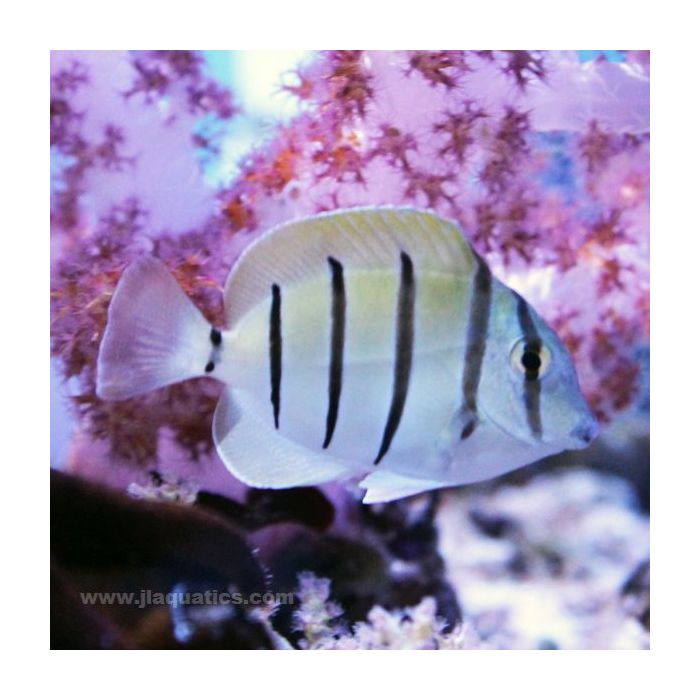Convict Tang (Asia Pacific)
The Convict tang is a lovely fish with a creamy white body and yellow dorsal fin. Running vertically down its body are thin stripes in a deep chocolate color. It’s simple but bold pattern makes it quite unique among the tangs. Males and females are visually identical.
The Convict tang can grow to be approximately 8 inches long and needs a large aquarium as an adult, we recommend at least 120 gallons or larger. It is one of the most peaceful tangs, and is the best candidate to be kept in a school with its own kind. Because of its more tranquil demeanor, and the fact that its scalpel is quite small compared to other tangs, it should be the first tang introduced to the aquarium.
Members of the genus Acanthurus tend to have very round shaped bodies, and come in a wide range of sizes, some being on the smaller side and some becoming large and grand. This genus contains approximately half of all tangs, so there are lots to choose from. They don't appreciate living with tangs sharing the same shape, however are typically non-aggressive with other fish.
Tangs are also called surgeonfish or doctor fish because they have at least one spine just in front of the tail which, when the tail is bent, can be stuck out and used as a threat display or weapon against competitive fish or predators. It is important to be cautious of this spine when handling the fish in a net. They feel most secure when there is plenty of live rock to hide in, as well as open space for swimming. In the wild some tangs live in schools, however in the confines of an aquarium it is usually best to have only one of each genus, or they may be extremely aggressive to each other. They are typically very peaceful with other types of fish.
Care should be taken with tangs to ensure they do not catch external parasites, such as Marine ICH and velvet, to which they are very prone.
Tangs do not eat coral or invertebrates and are considered reef safe. They are primarily herbivorous, and although they love to eat meaty foods, they must be fed plenty of marine algae in order to remain healthy and vigorous. Having a proper diet may also reduce aggressive behaviors; tangs naturally graze on algae throughout the day. Diet should include plenty of marine algae and Spirulina, frozen mysis shrimp, and other high quality items. They typically learn to eat dry foods easily. It is preferable to feed more than once a day, with an algae clip offered approximately every other day.
















